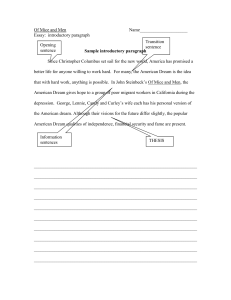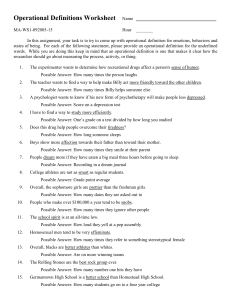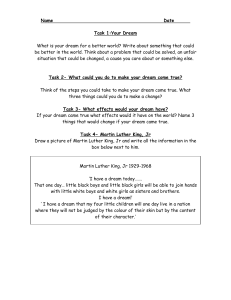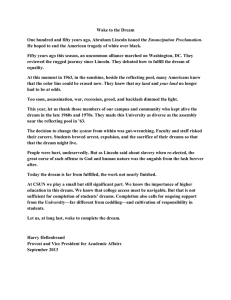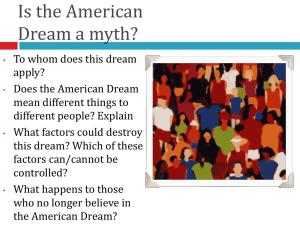Section C How Do We Change Multi-Minded, Self-Sustaining Health Production Systems?
advertisement
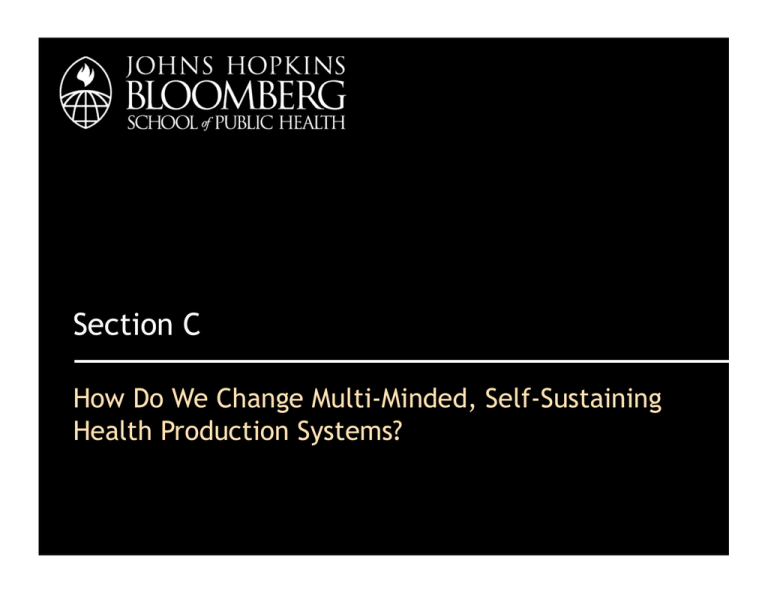
Section C How Do We Change Multi-Minded, Self-Sustaining Health Production Systems? Shared Vision 2 Leadership Skills for Change ! Catalytic: - Shared Vision of a health future that people want to create ! Enabling: - Teamwork with trust, open-mindedness, transparency, and mutual accountability for all outcomes ! Learning: - Generating new knowledge to mobilize the vast resources of ordinary people for change 3 Shared Vision: STAR Question ! How can we inspire others to seek goals “beyond imagination”? 4 “I Have a Dream!” ! “I have a dream that one day little black boys and black girls will join hands with little white boys and white girls as sisters and brothers. I have a dream that my four little children will one day live in a nation where they will not be judged by the color of their skin but by the content of their character. I have a dream today!” 5 He Did Not Say … “I Have a Strategic Plan!” ! Reduce racism by 10% per year for the next five years … 6 Shared Vision Asks: ! What do we want to happen? Or what do we want to create? NOT ! What is feasible given present conditions? 7 Should Visions Be Based on Situation Analysis? ! Should we want only what we can have given the current situation? ! Should we aim for what we truly want and change the current situation? 8 Conventional Approach to “Strategy Development” 1. Where are we now? 1. Situation analysis 2. Where do we want to go? 2. Strategic objectives 3. How do we get there? 3. Strategy 9 An Alternative Way 1. Where do we want to go? (Shared Vision) 2. Where are we now? 3. Why is there a difference? 4. What needs to change? 5. How do we get there? 10 A Few Questions 1. Do you have a national shared vision for health? 2. Do you have a shared vision for health in your organization? 3. Can everyone describe what the shared vision is? 4. If you don’t have a shared vision, what is the reason? 11 Key Question ! Do families, the primary producers of health, participate in shaping the reproductive health vision for their community? 12


